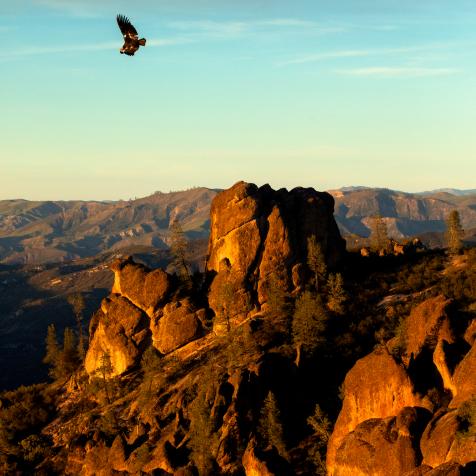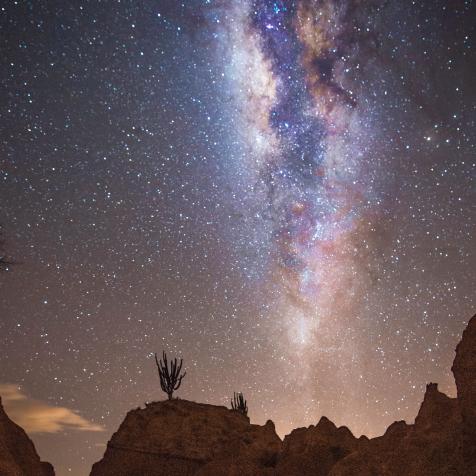
Shutterstock
Thousands of People Have Mysteriously Disappeared in "Alaska's Bermuda Triangle"
This track of wilderness is it far more deadly than its tropical cousin.
You've probably heard legends about planes and ships mysteriously disappearing in the Bermuda Triangle (or Devil's Triangle): the area of ocean between Florida, Puerto Rico, and Bermuda. But those legends don't come close to the very real, very serious disappearances that have plagued Alaska for decades. There's a region of wilderness known by names like "Alaska's Bermuda Triangle," the "Bermuda Triangle of Alaska," and the "Alaskan Triangle" — and no matter what name you give it, it's far more deadly than its tropical cousin.
Missing in Alaska
The border of the Alaskan Triangle stretches from Utkiagaviq (formerly known as Barrow) on the state's north coast to Anchorage and to Juneau across the southern coast and includes vast areas of largely unexplored wilderness. Sprawling forests, icy mountain peaks, and desolate tundras are clearly not the safest places in the world, but of the hundreds of search-and-rescue missions conducted every year, state troopers rarely find any trace of bodies — dead or alive.
The Alaskan Triangle first received widespread attention when U.S. House Majority Leader Hale Boggs' airplane vanished somewhere between Anchorage and Juneau in 1972. The disappearance triggered one of the country's largest ever search-and-rescue operations, involving 40 military aircraft, 50 civilian planes, and 39 days of searching an area of 32,000 square miles. Yet the search yielded not a shred of results: no wreckage, no debris, no human remains. Nothing.
(The silver lining: After this incident, Congress passed a law mandating the installation of emergency locator transmitters in all U.S. civilian aircraft.)
That wasn't the only aircraft to be lost, either: Back in 1950, a military craft with 44 passengers had disappeared without a trace; and a Cessna 340 carrying a pilot and four passengers vanished in 1990, never to be heard from again. Disappearances without a trace are strangely typical of cases in the region, and the cases aren't rare: Since 1988, more than 16,000 people have vanished in the Alaskan Triangle. This contributes to the annual filing of roughly four missing person reports for every 1,000 people in Alaska — more than twice the national average.
Nature or Unnatural?
It's easy to write off the disappearances as people getting lost and quickly succumbing to the elements, but the numbers seem too staggering for such an easy answer. One potential reason for the disappearing planes: The terrain utterly obliterates them. In 1947, for example, the British South American Airways (BSAA) Lancastrian 3 airliner Star Dust disappeared en route from Buenos Aires, Argentina to Santiago, Chile, and its fate was unknown for more than 50 years. Two Argentinian climbers found the plane's wreckage while ascending Mount Tupungato in 1998, and investigators concluded that Star Dust had likely crashed into a nearly vertical glacier, which caused an avalanche that buried it within minutes.
Still, it seems unlikely that similar avalanches would have occurred in every plane that's gone missing over the Alaskan Triangle. And what about the lost hikers, tourists, and Alaskan residents who weren't flying in planes? This is where theories get a little less, er, grounded in science, to say the least.
In the book "In Search of the Kushtaka, Alaska's Other Bigfoot: The Land-Otter Man of the Tlingit Indians," author Dennis Waller explores the history of mythical shape-shifting creatures found in stories of the Tlingit and Tsimshian Indians indigenous to southeastern Alaska. The "Kushtaka" roughly translates to "land-otter man" and is the Bigfoot of the Alaskan Triangle. Legend has it that the creature appears to travelers in an irresistible form (such as a relative or vulnerable child) to lure victims to a nearby river, where it tears them to shreds or turns them into another Kushtaka.
A more grounded explanation is that the deceptively beautiful glaciers of Alaska have swallowed many of the missing people and planes. Although they may appear to be solid ice, the glaciers are actually honeycombed with hidden chambers, and those crevasses can be larger than houses, or even office buildings. Coupled with the falling snow of the northern climate, it's not unreasonable to think that in the Alaskan Triangle, "vanishing into thin air" really just means "buried by nature." Just remember to stay safe if you do venture into the Alaskan wilderness, and contact Alaska's Missing Persons Clearinghouse if you find (or need help finding) a wayward traveler.
This article first appeared on Curiosity.com.





















